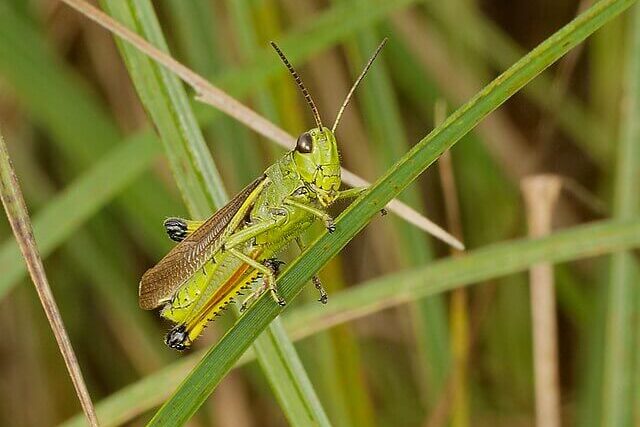
Britain’s largest grasshopper has returned to the Norfolk Broads after an absence of 86 years, thanks to a conservation initiative known as Hop of Hope.
Natural England confirmed that the large marsh grasshopper — also among the country’s rarest insects — was last recorded hatching in the wild in Norfolk in 1939.
The species, which thrives in fens and peat bogs, can grow up to 35mm (1.5in) in length in the case of females, but its numbers declined dramatically due to habitat loss.
Hannah Thacker, deputy director for Norfolk and Suffolk at Natural England, said the insect’s return showed “nature’s incredible resilience when given the right support”.
She added: “These grasshoppers are not just surviving, but breeding and creating sustainable populations…”
Ms Thacker said Natural England’s partners had developed “ground-breaking techniques using pre-incubated eggs to establish new populations in Norfolk sites where bog and fen habitats are thriving”.
The Hop of Hope programme is a partnership involving Citizen Zoo, Norfolk Wildlife Trust, the Wildlife Trust for Bedfordshire, Cambridgeshire and Northamptonshire, Natural England and the South Yare Wildlife Group.
It forms part of Natural England’s £13m species recovery programme, set up to support the government’s pledge to halt biodiversity loss by 2030.
Until recently, the large marsh grasshopper was confined to valley mires and wet heaths in the New Forest and Dorset. Since 2019, around 6,500 captive-reared grasshoppers have been released across six Norfolk sites, including Wild Ken Hill near Heacham.
Natural England said the reintroduction demonstrated that collaborative conservation efforts could restore species on the brink of regional extinction.
There are now plans to expand the reintroduction to further sites in Norfolk.
——————————————————————————
At Natural World Fund, we are passionate about restoring habitats in the UK to halt the decline in our wildlife.

